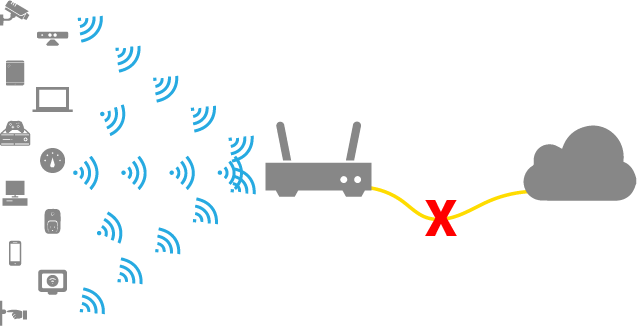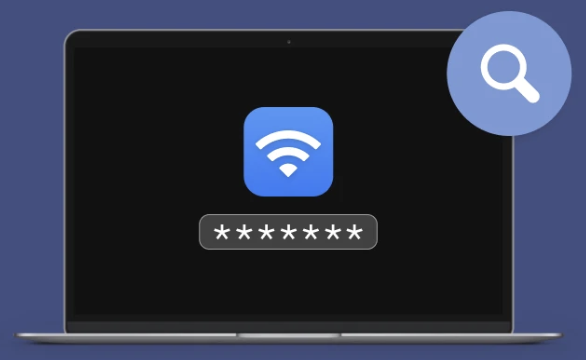

Wireless Local Area Network (WLAN)
Wi-Fi (IEEE 802.11 standards):The most common wireless network technology, suitable for all industries.
- Wi-Fi 7 (802.11be):Future technology offering higher speeds and lower latency
- Wi-Fi, that goes beyond the standard
- Critical user and IoT applications
- AI workloads depend on secure, seamless connectivity.
- Our Wi-Fi 7 solution delivers high-performance, high-capacity coverage with
AI capabilities to supercharge user and IoT experiences.

Quick enough ? The Battle for Corporate Competitiveness
Imagine your company as an F1 racing team, and the wireless network is your racetrack! If the track is old and congested, no matter how fast your car is, it won't make a difference, right? In the future, the key to business competitiveness lies in having a wireless racetrack that’s fast, stable, and capable of letting innovation race at full speed! Step on it!
WLAN, Wireless Local Area Network
Wi-Fi (IEEE 802.11 系列):The most common wireless networking technology, suitable for all industries.
• Wi-Fi 7 (802.11be):Future technology offering higher speeds and lower latency.
Wi-Fi, that goes beyond the standard
Critical user and IoT applications and AI workloads depend on secure, seamless connectivity.
Our Wi-Fi 7 delivers high-performance, high-capacity coverage with AI capabilities to supercharge user and IoT experiences.
Ultra-high speed and increased bandwidth.
Maximum transmission speed up to 46 Gbps (approximately 4.8 times faster than Wi-Fi 6E)
Wider 320 MHz bandwidth (Wi-Fi 6E supports up to only 160 MHz)。
4K QAM modulation technology (20% higher transmission efficiency compared to Wi-Fi 6’s 1024-QAM)
>>Improves past limitations by addressing bandwidth shortages and speed constraints, Enables more devices to transmit simultaneously and connect at high speeds。
>>Enhances transmission efficiency, Ideal for applications such as 8K video streaming, high-speed downloads, and large data transfers.
Multi-Link Operation (MLO)
Wi-Fi 7 supports simultaneous transmission across the 2.4GHz, 5GHz, and 6GHz bands.
(While Wi-Fi 6 can only use one frequency band at a time.)
Automatically switches to the optimal frequency band, adjusting in real-time based on network traffic and interference.
>> Improves past issues by reducing signal interference and network speed fluctuations, significantly enhancing connection stability.
>> Reduces latency, making it especially suitable for real-time applications such as online gaming, AR/VR, and video conferencing.
More efficient MU-MIMO and OFDMA
MU-MIMO upgraded to 16×16 (Wi-Fi 6 supports only up to 8×8).
More efficient OFDMA (Orthogonal Frequency Division Multiple Access) technology reduces transmission latency and resource wastage.
>> Improves past issues by enhancing the ability to handle multiple devices concurrently, reducing latency and congestion — ideal for smart homes and enterprise environments.
>> Improves bandwidth allocation efficiency, making it suitable for applications such as IoT devices and cloud computing.
Low latency and stronger QoS (Quality of Service)
Latency reduced to below 1ms, suitable for high-demand applications (such as autonomous driving and AI computing).
Adaptive channel usage technology (Preamble Puncturing) avoids interference and ensures stable transmission.
>> Improves past issues by reducing lag in video conferences and games, delivering a smoother user experience.
>> Better suited for real-time application scenarios such as industrial automation, AR/VR, and AI computing.
Higher security and energy efficiency
Adopts WPA4 (expected support) to further enhance wireless network security.
Lower power consumption, specially optimized for IoT devices and mobile device battery life.
>> Improves past issues: Prevents Wi-Fi phishing and man-in-the-middle attacks, strengthening data security for businesses and individuals.
>> Extends device battery life, suitable for smart homes and industrial IoT devices.
Lower power consumption and higher energy efficiency
Adopts an upgraded version of Target Wake Time (TWT) to enhance IoT device battery life.
Reduces unnecessary data transmission and saves power through more refined bandwidth management.
>> Improves the battery life of IoT and smart home devices, reducing the need for frequent charging.
>> Reduces enterprise network operating costs and saves energy consumption.
Generations of Wireless Local Area Networks (WLAN)
@ Wi-Fi 4 (802.11n): 2.4/5GHz bands, up to 600 Mbps
@ Wi-Fi 5 (802.11ac): 5GHz band, up to 3.5 Gbps
@ Wi-Fi 6 (802.11ax): 2.4/5GHz bands, up to 9.6 Gbps, improved multi-device concurrent connections
@ Wi-Fi 6E: Adds 6GHz band to Wi-Fi 6, reducing interference
Application Scenarios
| Smart Factory | Office, production machines, sensors for real-time connections, AGVs and machines reduce downtime, leading to a massive boost in production efficiency! |
| Hospitality & Tourism | Provides high-speed, stable Wi-Fi to improve guest satisfaction, offering contactless check-in and room service. |
| Retail Stores | Wi-Fi positioning + AI analysis, POS, customer service, and push discounts wherever customers go... sales soar! |
| Remote Collaboration | High-quality video calls without lag, enabling cross-border team collaboration without boundaries, making decisions faster than competitors. |
| Manufacturing | Connecting machines and equipment via Wi-Fi for remote monitoring and predictive maintenance. |
| Healthcare & Hospitals | Doctors and nurses access patient data, HER electronic medical records, and telemedicine via Wi-Fi. |
| Education & Campuses | Supports online courses, digital whiteboards, interactive learning apps, and digital libraries. |
| Smart Transportation | Provides free Wi-Fi at airports, stations, and shopping areas to enhance convenience. |
| Smart Cities | Wireless monitoring cameras, parking management, vehicle tracking systems, and mobile payments; Wi-Fi connects buses and subway ticketing systems, enabling mobile payments. |






